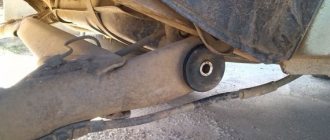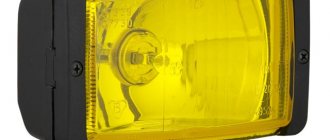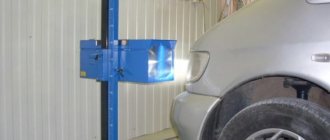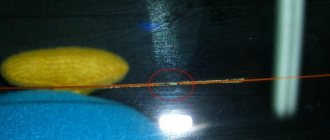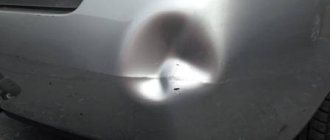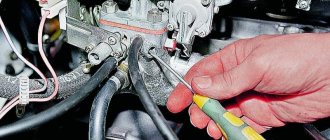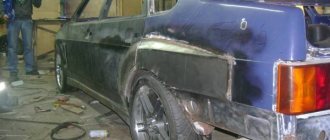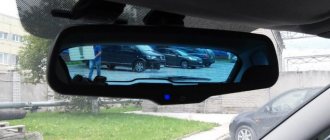A noticeable loss of engine power, increased fuel consumption and unstable operation of the power unit are signs of various malfunctions. Problems can occur in the internal combustion engine itself, in the ignition system, in the engine power system, etc.
Note that a fairly common and common cause of these symptoms is misfire. Ignition of the fuel-air mixture in the cylinder does not occur or the mixture ignites with malfunctions, as a result of which the power plant does not deliver full power.
We also recommend reading the article on how to increase engine power. From this article you will learn about various methods and solutions for increasing the power and performance of internal combustion engines.
The problem does not manifest itself in the same way, since misfires in all cylinders or only in one cylinder can occur occasionally or be present constantly. On some engines, cold misfires disappear after warming up, while on other engines, numerous misfires occur regardless of the temperature of the power unit and its operating mode.
In this article, we will look at the main causes of cylinder misfires, talk about why misfires occur on a cold engine, and how misfires are diagnosed.
TEST RIDE MODE
- Connect the handheld diagnostic tool to the DLC3.
- Turn on the ignition (IG).
- Turn on the portable diagnostic tool.
- Record the DTC and freeze data.
- Switch the ECM from normal diagnostic mode to active diagnostic mode using the handheld scan tool ().
- Count the number of misfires for each cylinder (Cylinder #1, #2, #3 and #4) while the engine is idling. If the number of misfires is displayed for at least one cylinder, skip the next test drive.
- Drive the vehicle several times at engine speed and engine load equal to the values for MISFIRE RPM and MISFIRE LOAD in DATA LIST mode. HINT: To store misfire related DTCs, the vehicle must be driven for the amount of time specified in the table below and the MISFIRE RPM and MISFIRE LOAD values are maintained in DATA LIST mode.
Engine speed Duration Idling 8 minutes or more 1000 4 minutes 30 seconds or more 2000 2 minutes 30 seconds or more 3000 1 minute 30 seconds or more - Check for misfire by reading DTCs and freeze data. HINT: Do not turn the ignition switch off without recording the stored DTCs and freeze data. When the ECM switches to normal diagnostic mode (default), all stored DTCs and freeze data are cleared.
- Record the DTC, freeze data, and number of misfires.
- Turn off the ignition and wait at least 5 seconds.
Consequences of error P0300
Engine diagnostics using spark plugs
If an engine misfires in the exhaust pipe, the level of exhaust gas toxicity increases, which, in turn, can also lead to an increase in the temperature in the catalyst, which causes its damage (the honeycombs melt because the temperature exceeds threshold of 800 °C). On some cars, in order to reduce the burnout of fuel in the catalytic converter and, consequently, the level of toxicity, the ECM unit monitors the frequency of misfires using crankshaft and camshaft sensors and, in addition to registering error p0300, signaling a checkengine light, it can also turn off the injectors of a specific cylinder, in which the gap was discovered. It is worth mentioning that most often, for some reason, the owners of cars such as Lacetti, Matiz, Priora and other injection VAZs, as well as Opel, Nissan, Kia cars, are interested in the reasons for the occurrence of this error.
Diagnosis of misfires on a VAZ Video
Diagnosis of the ignition system early or later
You can identify the cause of misfire on a modern car, where most components and mechanisms have been replaced with units with electronic control systems, in a few minutes using the appropriate built-in programs or special equipment. Of course, the exception is some stages that require visual inspection. For domestic transport, there is no such simple way to perform testing using modern electronic diagnostic tools. In this case, you need to resort to step-by-step verification of parts that affect the operation of the cylinders. The whole process can be divided into 6 operations:
1) Check the wiring. Poor condition of high-voltage cables is often the cause of misfire. Carefully check the insulation protection, the quality of the connectors and the reliability of their fixation. There should be no cracks or chips on the surface. Often the cause of loss of contact can be a bend in the core, this is especially true for old cables. To check, you can use a simple design with a light bulb and a battery. If there are problems in the wiring, you will quickly understand. 2) Checking the spark plugs. Each element must be unscrewed and carefully inspected for proper clearance, damage or clogging. 3) Disassemble the ignition distributor. It is a rather complex element, for working with which it is best to use a diagram. This will eliminate the slightest errors during reassembly and will significantly speed up the work.4) Checking compression in the cylinders. To perform this procedure, you will need a pressure gauge and a special attachment for the spark plug connector. A nozzle is inserted into the hole and the pressure inside the system is checked using a pressure gauge.
5) Checking the valves. First you should make sure of their quality, and then check the level of adjustment. Valves are often the cause of misfires. However, it is recommended to inspect them only after all the operations described above have been carried out. Valve settings can spontaneously get lost due to the car receiving serious mechanical shocks. The condition of the seal also plays an important role. When it wears out, compression decreases sharply.6) Checking the cylinders. No tools are needed for this procedure. To check each cylinder step by step, you need to turn on the engine at idle. Then disconnect the wires from the spark plugs one by one. When the cable is disconnected, the operation of the motor should change and this way you can determine the faulty mechanism.
Electronic error recognition
Single or multiple misfires on modern cars are immediately shown by the on-board computer. Therefore, there is no need to go through the entire electronic system to find the causes. Error number P indicates a misfire. Next comes the serial number on the cylinder. The on-board computer is programmed to indicate the cylinder number if the factory configuration is retained. But in some cases, motorists further upgrade the car. Then you should not pay attention to error codes, as they may provide incorrect information.
In addition to the main error code, the on-board computer scanner also shows the direction of the check that should be carried out in order to identify the main cause of the problem. They all depend on the manufacturer and specific brand of car. For example, if P0204 is indicated, then the fault is in the injector. Or P0300 tells the driver that all cylinders miss their cycle from time to time. Often misfires occur due to a poor fuel mixture or faulty spark plugs.
If you filled in low-quality fuel, after which the car began to stall, it is recommended:
- Change fuel
- clean the injector,
- replace spark plugs,
- replace the fuel filter.
They will need to be either cleaned or replaced.
With older cars, things are much more complicated. In this case, experienced motorists usually start manual diagnostics. Initially, it is recommended to check the coils and wiring, since they are the ones most often damaged.
After wiring, inspect the spark plugs, faulty spark plugs:
- candles are filled with an enriched mixture
- increased gap due to wear
- increased carbon deposits due to combustion of oil and fuel additives
- The spark plug heat rating does not match the engine
Next, the engine itself, cylinders and valves are checked. First, the system is inspected for compression problems, then the valves are adjusted. If all else fails, then the cylinder itself or several of them have completely failed.
Recommendations for checking and troubleshooting
Kamaz fuel injection pump repair and diagnostics
The first thing you should check when misfiring is the explosive wires and ignition coils (module), they often turn out to have broken insulation, a break, or an oily surface. We measure the wires with a multimeter (normal resistance is about 4 - 10 kOhm), in resistance mode, but to check individual ignition coils, you just need to swap places with a known working cylinder and clear the errors again. If the code has changed to the number of another cylinder, then the coil is faulty. The ignition module is more complicated; it needs to be checked with a tester.
Inspect all ignition system components very carefully for wear or damage.
The second in line are the spark plugs - a damaged electrode, incorrect gap, or oil deposits lead to failure or unstable operation of the spark plug.
The spark plug insulator must be white, without yellow traces from the breakdown of the spark.
Having unscrewed the spark plug for inspection, then what else can be done is to measure the compression in the cylinder. Reduced or absent compression leads to insufficient compression, and therefore creates problems with ignition of the mixture.
Clogged fuel injectors provoke interruptions in the supply of fuel to the combustion chamber, but, unfortunately, without a stand it will not be possible to quickly check them. And the only thing that can be recommended in such a situation is to refuel with fuel with a higher octane number, and drive the car for some time at high speeds (4-5 thousand/rev).
A fuel filter that has not been changed for a long time or bad gasoline very often becomes the culprit for the unstable operation of the injectors. Therefore, remember the last time the filter was changed, and at what gas station you filled it with fuel.
A stuck EGR valve or leaks through the intake manifold gasket, which can also cause random misfires, can be difficult to determine on your own, so when doing computer diagnostics, pay attention to such a parameter as long-term fuel trim. It will show how much the ECU compensates for the imbalance in the air/fuel ratio
When this parameter on a particular cylinder differs by more than 10%, this may indicate a vacuum leak or air leak.
A normal adjustment does not exceed 1–3% in one direction or another.
More rare cases that cause a violation of the ignition order, such as disrupted valve timing or a violation of the exhaust gas outlet, are controlled by the control unit and, in addition to the P030X code, other errors will appear regarding the catalyst, lambda probe, camshafts.
I hope all these tips will help you not only figure out the cause of the malfunction, but also fix it yourself, without outside help, without spending a ruble, or pay only for a specific part, and not waste money on replacing everything that can fail .
How to detect a malfunction?
For owners of cars with smart hardware, the task of detecting a problem is greatly simplified. The electronics generate error codes indicating a faulty cylinder.
Cars with and without an ECU need to be checked differently.
Car with ECU
We connect the scanner and begin to decipher the error codes. If the code contains an indication of a specific cylinder, you need to pay attention to it first. The problem may be in the spark plugs or in the wiring connected to this cylinder. It's worth checking the gaskets. If error P0300 appears, check the fuel filter and the quality of the fuel mixture used. The reading on the P0204 device indicates damage to the injector.
Many cars, even those made in Russia, are now equipped with electronic units. If the ECU does not work correctly, it is better to replace it. The new “intelligence” must be compatible with the car model. Electronic units can also be installed on old VAZs.
Car without ECU
Finding the source of the problem in cars without an ECU is much more difficult. As a rule, misfire occurs in several cylinders at once. Here, manual checking of the mechanisms is indispensable. First of all, you need to inspect the wiring and spark plugs. The armored wires are checked using an ohmmeter. If the readings are too low or too high, the wiring will have to be replaced. If the readings are normal, you need to measure the compression in the cylinders.
Causes of misfire in cylinder
One of the most common car malfunctions is a cylinder misfire, which causes the car to jerk violently while driving or refuse to start at all.
In the event of such a malfunction, the engine “check” located on the dashboard will definitely light up. And the malfunction itself can be accurately diagnosed using the machine’s on-board computer, which, after appropriate testing, will generate an error like “P0300”. The last digit in the code indicates the serial number of the cylinder in which the misfire occurs. For example, error "P0303" will mean that the misfire is occurring on the third cylinder.
If the error is displayed in exactly this form - “P0300”, then this indicates an arbitrary misfire in different cylinders.
Main causes of misfire
It is customary to identify several key reasons due to which misfires occur in the cylinders, leading to the fact that the fuel mixture injected into the cylinder does not ignite. All the reasons given below are found on engines of different types, powers and do not depend on the number of cylinders:
- Broken gap or carbon deposits on the spark plugs, as well as their mechanical damage (read about this in detail here);
- High-voltage wires are damaged, have excessive resistance, or their connection points are dirty;
- Failure of the ignition coil or module; How to check the ignition coil; How to check the ignition module
- Contamination of the injectors, either due to the use of bad fuel, or because they simply have not been cleaned for a long time (how to wash the injectors with your own hands);
- Loss of compression pressure in the cylinder, due to which the atomized fuel mixture is not sufficiently compressed by the piston, resulting in misfires in the cylinders;
- Failure in timing adjustment (eight-valve engines suffer from wear on the timing belt, and sixteen-valve engines suffer from leaky hydraulic compensators);
- Excess air entering the fuel supply system due to a breakdown of the intake manifold, deformation of the injector rings and others;
- Breakage of the cylinder, leading to the latter touching directly against the walls of the piston or its ring.
Of course, often the cause of misfire can be a different combination of the above reasons.
At the same time, cars that do not have an ECU are diagnosed in car repair shops, according to the principle of eliminating the causes of misfire in the cylinders that were mentioned above (in the order given above).
Symptoms of a problem
A mixture misfire is a failure to ignite the fuel-air mixture or its untimely ignition. In any of the cases, the system counts the number of misses and delays, and, if necessary, turns off the idle cylinder or even a pair. On most cars, the first sign of a malfunction is the “check” symbol lighting up on the dashboard.
Also among the common signs can be noted:
- Smell of fuel from the exhaust pipe . Since the mixture did not ignite in the cylinder, it is discharged almost unchanged or partially neutralized.
- Shoots in the exhaust system . If a partial fire occurs, the catalytic converter is severely damaged, which can lead to popping noises.
- Loss of power . The engine does not work properly, causing the crankshaft to spin at a lower speed, resulting in a significant loss of power.
- Engine tripping . Failure of one or a pair of cylinders leads to the fact that the engine begins to vibrate during operation and other signs of malfunction appear.
We also recommend reading our specialist’s article, which talks about what white smoke from the exhaust pipe means.
In cars with an electronic control unit, there are several types of errors that indicate a breakdown.
- P0300 . It is a sign of multiple failures in the process of ignition of the combustible mixture in different cylinders.
- P0301 - p0304 . The last number shows which cylinder is not working properly.
We recommend: Do-it-yourself replacement of the pump on a VAZ 2107
Engine misfires. Causes. Diagnostics.
Misfires in the cylinders, sometimes called “misfire errors”, are usually easy to notice - the car begins to twitch when accelerating, at idle it “shakes”, they also say “troubles the engine”. The reason is common, related to problems with ignition or fuel; in especially severe cases, the piston group is to blame. Depending on the severity of the situation, misfires are accompanied by a loss of engine power.
If misfires appear only under certain circumstances, for example, under load or in a narrow rpm range, then they are difficult to detect.
For old cars:
On older, carbureted cars, the cause will most often be in the ignition system, since they do not have many complex sensors that can cause misfires. Misfire can also be caused by a vacuum leak or a faulty fuel pump. The first thing to do is determine which cylinder or cylinders are misfiring, and the best way to tell this is the color of the spark plug.
A working plug will have a brownish coloration, while a plug from a misfiring cylinder will be gray or even black.
If the cause is the spark plug, it must be replaced. The next diagnostic step is to check the ignition wires for wear or damage. If necessary, they must also be replaced.
For most modern cars:
In modern cars, thanks to the OBD-II system, misfires will always be accompanied by a lit or flashing Check Engine light.
A flashing Check Engine light indicates a more serious misfire problem, so it is best not to drive such a vehicle. The OBD-II diagnostic scanner will show you which cylinder is at fault, but it cannot indicate the cause - the injector, spark plug or ignition coil, in the most severe cases, piston or cylinder damage. As with carbureted cars, it's a good idea to take a look at the plugs, wires and ignition coils first. Sometimes, when inspecting the engine in the dark, you can notice sparks coming from a “broken” ignition wire.
OBD-II error codes associated with misfires are P0301, P0302, P0303, P0304, P0305, P0306, P0307, P0308, P0309, P0310.
One way to identify a bad spark plug is to start the car and let it idle. Then sequentially disconnect the ignition wires from the coil or remove the connector from the ignition coils. If, when switched off, the engine's performance changes, it begins to jerk more or stall, then the spark plug or coil is working properly. Removing the wire from a faulty spark plug or coil will not change the operation of the engine. If a new spark plug in that cylinder does not solve the misfire problem, then this means that the coil or wire is to blame. This is how the source of the problem “troubling motor” is determined by the method of elimination.
If the ignition system is not the source of the misfire problem, then the injector and fuel line will need to be checked. A multimeter is used to check the injectors. It is used to measure the resistance of each injector. If the resistance of any of the injectors is outside the specified values, then it must be replaced. You can also check whether voltage is coming to the injectors. The performance of the injector cannot be assessed using a multimeter.
Checking the fuel line, pressure in it, and compression in the cylinders should only be carried out by a qualified specialist using special equipment.
Common causes of misfire:
- faulty spark plugs or wires
- faulty ignition coil
- worn or damaged piston rings
burnt or bent valves
- damaged valve springs
- camshaft wear
- inoperative fuel injector
Misfire
The engine trembles, shakes and does not move - a problem that is easy to describe in words, but difficult to find.
A more technical name for this problem is “misfire.” Let's talk about why it occurs, how it can be diagnosed, and how the ELM327 scanner in combination with the Motordata OBD program will help with this. The essence of the problem
First of all, let's define the terms. Some people call this problem “the car is shaking and won’t move”, some say “the car is shaking”, others call it “misfire”. Whatever you call it, the symptoms are the same - increased vibrations, decreased power. Or maybe the problem does not always appear, but randomly, for some reason mainly when it is necessary to speed up.
All this may indicate misfire. That’s right, since the term “misfire” implies problems with the ignition system - spark plugs, coils, and so on. And the motor can “triple” for other reasons, which we will list below. Actually, in English this phenomenon is called “misfire”, which is much more accurate and concise. However, for convenience, the text below will also sometimes use the more familiar term “misfire.”
Why does the control unit need to register misfires?
Misfires are bad not only because they create discomfort for the driver, but also because unburned fuel ends up in the exhaust. This is not very good for the environment. But that's not all. Fuel washes away the oil film from the cylinder walls, and this can lead to increased wear on the cylinder and piston.
In addition, the vast majority of cars on our roads are equipped with a catalytic converter (colloquially known as a “catalyst”) - a device in which toxic exhaust components are oxidized to harmless compounds. The catalyst is a metal or ceramic “honeycomb” coated with a layer of noble metals, in the presence of which oxidation occurs faster (hence, in fact, the name of the device). The catalyst operates at high temperatures (400-800°C). If there is a misfire, when unburned gasoline gets on it, the temperature of the catalyst rises to 1400°C, which leads to its melting or destruction. And this is again a problem. A melted catalyst stops passing exhaust gases, which leads to new problems - it is more difficult for the engine to start, and power decreases even more. If the catalyst is destroyed, the resulting crumbs can be drawn into the cylinders, where they act as an abrasive, very quickly leading to the need for a major engine overhaul.
In any case, after the catalyst is destroyed, it must either be changed or removed. Removing the catalyst is a questionable action both from an environmental point of view and from the point of view of the consumer qualities of the car. Starting from the fact that the exhaust smells quite strongly without neutralizing toxic substances, and ending with the fact that it is necessary to “deceive” the control unit in some way, which is not always possible to do correctly. A new catalyst is quite expensive, even if you replace it not entirely in the housing, but separately in the honeycomb.
Catalyst without housing. To replace it, the body (“can” in common parlance) of the catalyst is opened, the honeycombs of the old (melted or crumbled) catalyst are removed, and the new catalyst is welded in its place.
Based on the foregoing, it is clear that the control unit must register misfires both for environmental reasons and to avoid damage to the engine and catalyst. It is difficult to say which of the two reasons was the main one, but according to the OBD2/EOBD standard, modern control units have the ability to register omissions. However, the implementation of this requirement is different for everyone. There are units and vehicles that do not register misfires even when the cylinder is completely deactivated.
How does the control unit register a problem?
With the question “do I need to register?” We figured it out, now we need to figure out exactly how to do it. Unfortunately, there is no sensor that can clearly determine whether there was ignition in the cylinder. Therefore, the control units contain a registration algorithm based on indirect signs. Most often, the control unit analyzes the uniformity of rotation of the crankshaft using signals from the DPKV (crankshaft position sensor). Uneven rotation under certain conditions is considered a sign of misfire. As a rule, deviations of more than 0.2% are taken as deviations.
In addition, on cars with individual ignition coils, the coil control circuits are monitored - if you remove the connector from one coil, the control unit will a priori mark this cylinder as inoperative.
In a number of systems, other signs may be used to register passes.
Even if misfires were recorded reliably, and not based on indirect signs, it would be incorrect to turn off a cylinder based on one detected misfire. Therefore, the control unit has a “misfire counter” parameter for each cylinder. As a rule, the control unit decides that misfires are present and the cylinder must be turned off if the number of misfires on any of the cylinders exceeds a certain threshold set by the developers.
Actions taken by control units when misfires are detected
The first and most important thing the unit does when it detects misfires is to start flashing the Check Engine light at the time it detects them. This is one of the few reasons when the “check” is flashing. So few that we can conclude with almost 100% certainty: the “check” is flashing—misfire.
The second thing the block does, as already mentioned, is to cut off the fuel supply to the cylinder in which the leaks are recorded. The corresponding injector simply stops receiving opening signals.
Finally, thirdly, the control unit generates and stores an error code in memory, and also lights up the Check Engine constantly. As a rule, this is a P0301-P0308 error if it was possible to identify specific cylinders with misfires. The last digit exactly corresponds to the cylinder number. If it is not possible to determine which cylinder is misfiring, or if multiple cylinders are misfiring, code P0300 is set.
In some control units, not standard codes P0300-P0308 are generated, but codes with other numbers, from the category specific to a particular manufacturer. For example, this happens on a Lada X-Ray car with a VAZ-21179 engine. Despite this, their meaning and decoding are similar to standard P0300-P0308.
For the situation mentioned above with the coil control circuit, another error code is generated that is not directly related to misfires.
How to look for a problem
Without special tools, it can be difficult to distinguish a misfire from another problem. As a rule, three signs are available to the driver - vibrations, reduced power and a flashing (burning) Check Engine light. None of the signs is sufficient to unambiguously confirm omissions.
There is good news - among special tools, a simple ELM327 scanner in combination with a program that can communicate with the car using the OBD2 protocol, or even better, using the factory protocol, is often sufficient. We consider Motordata OBD as such a program, since it can work using both protocols and does it well.
The first and obvious thing to do is read the errors. There may already be an error stored in memory that points to the specific cylinder with the problem. For example, this is what the error will look like when the coil is turned off on a Ford Focus 2 with a 2.0 liter engine:
Coil control circuit error
We see that error P0352 has been recorded - this is a malfunction of the coil circuit of the second cylinder. The logic here is the same as with errors P0301-P0308 - the last digit indicates the number of the cylinder for which the problem was detected. So, P0351 will mean a problem with the coil circuit of the first cylinder. Also in this case, the error is accompanied by a freeze frame, which preserves the conditions under which the error was recorded. In principle, it does not have any special value, but from the value of pressure in the intake manifold one can understand that it is already recorded when the engine is running, otherwise there would be no vacuum in the intake and there would be a value of 100 kPa.
If the control unit is unable to register misfires or for some other reason does not generate an error code, you can try to look at the composition of the mixture, that is, at the readings of the lambda probe. Since no combustion occurs in the problem cylinder, fuel and air leave it without changing its composition. This means that the oxygen concentration at the outlet is about 21%, which is a very high figure for the lambda probe, and as a result it will show a value corresponding to a lean mixture. For a threshold lambda probe this will be a value of about 0 V:
Lambda probe readings for misfires
Let's jump ahead a little and clarify - a lean mixture may not be a consequence, but a cause of the problem - when there is too much air, the mixture may not always ignite, which will ultimately result in the same misfires, but this will have nothing to do with the ignition system.
It is also possible that there is no error for a specific cylinder, but you can view misfire counters for all cylinders. Depending on the specific car, this may be available via both the OBD2 protocol and the factory protocol:
Misfire counters on a BMW car
If, nevertheless, it was possible to localize the cylinder with which the error is associated, then you need to figure out why the ignition in it disappears. There are not so many reasons, if in a large cell:
- spark.
- fuel supply.
- compression.
Based on practice, most often the reason lies in the ignition system. Cases of injector failure are very rare, so we will not describe checking them here. Well, checking compression is a procedure on gasoline engines that is simple enough to be described here.
Let's focus on checking the ignition system. Here the culprits could be in turn:
1) spark plugs due to an increased gap or breakdown of the insulator. To check, unscrew the spark plug, measure the gap and carefully inspect the porcelain insulator for breakdowns:
Spark plug breakdown through insulator
If there is an excessively increased gap or signs of breakdown, the spark plugs must be replaced to continue the diagnosis.
But the characteristic brown “belt” at the junction of the insulator with the metal part of the spark plug, contrary to popular belief, is not a sign of any problems with the spark plug. Its presence can only indicate the presence of oil in the spark plug well, but this does not in any way affect the operation of the ignition system.
"belt" on the spark plug insulator
2) Tips of spark plug wires or coils, put on spark plugs. They also need to be inspected from the inside for breakdowns or, for example, signs of corrosion - such cases have also been encountered.
3) The problem may also be related to the internal state of high-voltage wires or ignition coils. The wires can be tested with a multimeter, their resistance should be approximately in the range from 500 Ohms to 20 kOhms - the specific normal value depends on the make and model of the car.
If the car has individual ignition coils, then the easiest way is to swap the coils from the problematic and working cylinder. If the error code begins to indicate a different cylinder, this clearly indicates a problem with the coil.
You can do the same with high-voltage wires if their length allows you to change their places. The reality, however, is that for systems with one coil and high-voltage wires, the cost of replacing the system (coil + wires + spark plugs) is most often comparable to the cost of troubleshooting work - especially in cases where it is necessary to remove the intake manifold to access the spark plugs.
An alternative way to check the coil and wires is the “old-fashioned” method, in which you need to unscrew the spark plug from the cylinder, insert it into the coil, lean the thread against any unpainted metal part under the hood, and turn it with the starter. In this situation, you can see with your eyes whether there is a spark or not.
A difficult case for diagnosis are cars on which the ignition coils of all cylinders are combined into one non-separable module. This is a very common solution. There is obviously no way to swap the coils for testing.
It is convenient if it is possible to take a known-good coil from another car, as is often practiced among members of clubs united by one brand - classically, this is how members of Saab clubs checked the ignition “cassette” at a time when cars of this brand were not yet uncommon in the world. roads.
In principle, even on such a module it is possible to visually check for the presence of a spark, but it will look cumbersome and rather strange:
Check for the presence of a spark on the ignition module. A metal scrap is pressed against the threaded parts of the spark plugs and connected by a wire to the negative terminal. The ignition module is normally connected to the car wiring
Other Possible Causes
Situations are also possible when the problem is not related to the ignition, injectors, or compression. Moreover, often a misfire error can occur when ignition is actually present. Here are some examples of such situations:
- If there are problems with the DPKV, its wiring or the master disk, there may be a distortion of the signal from the sensor, which the control unit will perceive as uneven rotation and, based on this sign, will record a misfire.
- There are known cases of destruction of a dual-mass flywheel, due to which there was indeed uneven rotation of the engine. This externally looked like a throbbing engine, and was perceived by the control unit as such, but in fact it had nothing to do with the combustion processes in the cylinders.
- As already mentioned, ignition problems can be associated with mixture formation and the supply of mixture to the cylinders. For example, although strong air leaks can be compensated by fuel correction, but only to certain limits. Well, a lean mixture has every right to ignite poorly.
Another reason for this situation may be simply incorrect timing phases, due to which ignition will also occur at the wrong time.
Considering all of the above, we can state: in determining the causes of misfires, as in other diagnostics, the main role is played not by the available tool, but by an understanding of the processes occurring under the hood and in the control unit. However, it is most often impossible to make a diagnosis with knowledge alone, and a tool is needed to obtain at least primary information. To remove coils and spark plugs, these will be wrenches, to check the shape and levels of signals - an oscilloscope, and to obtain information from the control unit, the Motordata OBD car diagnostic application is ideal.
Video for this article:
Bochkanov Evgeniy Aleksandrovich
© Legion-Avtodata
Moscow, Zelenograd [email protected]
How to determine if the cylinders are not working correctly
The operation of any gasoline power unit depends on many factors and systems. Therefore, when a car enthusiast notices its incorrect operation, or other changes, you need to immediately find out the reason, and try to eliminate it on your own and go to a service station.
To spend less money, car enthusiasts must find out the cause themselves and then decide how to localize it. Therefore, if a car owner begins to notice that under load or idling his engine loses power, random detonations, strong vibration, black exhaust gases, tripping are detected, and in general the engine is running poorly, then one of the problems may be poor ignition of the mixture, its incomplete combustion. The reasons may be different and are discussed in detail below.
At the same time, you need to understand that injection engines differ from gasoline engines in the structure of fuel supply to the combustion chamber. Therefore, depending on the type of power unit, multiple misfires may differ from each other on carburetor and injection engines.
Misfires
If you find that your car has lost its former power, and the engine itself has begun to work with some interruptions, or the car has difficulty going uphill and only in second gear, you can say with confidence that the engine is to blame. However, what exactly is wrong with it and why did the car begin to behave this way? This and much more will be discussed in my article today.
If you see an error in the form of the English letter “P” on the computer display, the reason is most likely a misfire in the cylinder.
So, here is a list of common misfire errors, as well as their classification:
P0301 – misfire in the first cylinder;
P0302 – misfire in the second cylinder;
P0303 – misfire in the third cylinder, etc.
So what do we have? There is a breakdown that needs to be fixed, here, as they say, everyone decides for himself what suits him best: go to a car service center, where the experts will help you solve the misfire problem, and the second option is to find the cause and fix it yourself.
Causes of misfire in a cylinder
Let me start with what is a misfire? This definition is usually used to describe a phenomenon in an engine when one of the cylinders accelerates a little slower than the others, which actually disrupts the working process of the engine and the stroke cycle. Often, the consequences of misfire, for example, such as deterioration of the exhaust, are of little interest to anyone. Most car owners are most often concerned that the car practically does not move, constantly “twitches” and cannot cope with the load.
What misfires are is more or less clear, now I propose to understand the reasons for this phenomenon. In fact, there are a lot of such reasons, so I will list the most typical ones.
1. Quality of the air-fuel mixture. Due to poor quality fuel, the injectors can become clogged. In this situation, everything is very simple - first of all, you need to change the gas station or switch to high-octane gasoline. In addition, a lean mixture can often be due to the following faults: pressure regulator, fuel pump or clogged filter.
2. Candles. These parts can often be punctured or simply incorrectly adjusted (large or small gap).
3. High voltage wires. They may either have mechanical damage or have too high a resistance.
4. Ignition coils or modules are faulty.
5. Low or uneven compression can cause the air-fuel mixture to be insufficiently compressed.
6. Timing mechanism (gas distribution mechanism). Misfire in the cylinder can occur due to incorrect adjustment of the timing gaps due to wear or failure of settings, or leakage of hydraulic compensators.
7. Malfunction of one of the cylinders. This can happen, for example, due to a decrease in the gap between the cylinder and the piston, etc.
In reality, it often happens that when a cylinder misfires, every motorist begins to logically try to determine the cause and first of all checks the entire electrical network of the car. However, in the end, the cause often lies in faulty car valves.
We are looking for the cause of misfire in the cylinder
Car owners whose cars are equipped with “electronic brains” are a little more fortunate in this matter, since it is possible to use an auto tester. Thanks to the “brains” and testers, you can see error codes, for example, where exactly misfires occur in cylinder 1 or 3.
In addition, using the scanner you can also determine the direction of the search itself. If the scanner showed you code P0204, and you know that this is an injector malfunction. Code P0300 indicates random misfire in all cylinders. Therefore, we can conclude that the air-fuel mixture is deteriorating, which means that the reason may lie in high air suction at the recirculation valve or in low pressure due to a faulty pump.
If a misfire occurs in a car that does not have an electronic assistant, then you will have to look for the cause using “old-fashioned methods.” They begin with checking the electrical equipment located under the hood: spark plugs, explosive wires, after which the compression in the cylinders and the condition of the fuel pump are measured.
If none of the versions are confirmed, there are two options: either continue the search on your own, or go to a service station for help, where they will help you fix the problem for money.
What could be the reasons?
Single or multiple misfires or fires can occur in different situations. The following reasons are the most common:
- Quality of the fuel mixture. In the corners of our Motherland there are unscrupulous fuel stations.
- Problems with spark plugs. They may be of poor quality, or they may have large gaps or heavy carbon deposits. The problem is eliminated by replacing the spark plugs;
- Low or uneven compression. Then the fuel is supplied to a cylinder in which there is insufficient compression, the engine will not be able to work with such a mixture, so it skips its cycle;
- Problems in one or more cylinders. Occurrence of piston rings due to coking or mechanical damage.
- Faulty coil. Cracked insulators or electronic failure
- Malfunction of injectors also affects the quality of atomization of the fuel mixture; therefore, if the injector is faulty or coked, combustion misfires will begin in the cylinder
Also, in winter, misfire or fire very often occurs on older cars, since drivers turn on the choke to quickly warm up. This causes the mixture to be too rich, causing the spark plugs to flood.
The head gasket in the cylinders is damaged and compression leaks into the cooling system jacket. In this case, the engine operates in normal mode as if every other time.
These are not all the reasons why one or more cylinders may be damaged. If the driver cannot figure out the problem on his own, he does not have experience or a visual aid, it is recommended to turn to professionals.
No matter what car you have, the reasons may be the same.
The scanner or on-board computer generated the error “multiple misfires” and the “check engine” light is on. At the same time, the motor shakes all over and works unstably and intermittently. Of course, continuing to move (if an error occurs along the way) is highly not recommended.
And even if you reset the error with a scanner or by removing the terminal from the battery, the check lamp will stop lighting for a while, but the instability of operation will remain. There may be several options here, so it’s not at all necessary to immediately get into the ignition system.
So let's take a closer look at what could have happened.
Before we figure out what the problem is, it is advisable for us to know how such an error occurs in the memory of the control unit. It is detected by a knock sensor, which compares the engine knock readings with the readings of the rough road sensor. The control unit “knows” at what moment and in which cylinder the process of ignition of the working mixture occurs.
Therefore, he can determine with 100% probability a misfire in a specific cylinder. If there is no indication of any one cylinder, namely multiple misfires, then it is quite possible that the mechanical part of the engine is to blame.
Yes, yes...mechanics can be the cause of such a fault code. And it would be more correct to say “multiple misfires.” That is, it is not correct to blame the ignition system for everything.
The valves may simply be to blame
(burnt out or pinched, incorrectly adjusted). But the simplest reason is, of course, the spark plugs,
unscrew the spark plugs and check on the stand. If there is no stand, then at least visually inspect for the presence of a breakdown. It is certainly rare for several candles not to work at once, but not an exception. Moreover, knowing the quality of this product. If the spark plugs are turned out, immediately check the compression in all cylinders. It is advisable that the spread does not exceed +-1bar. If in any cylinder the compression differs by more than 2, then pour 10 grams of engine oil into this cylinder and measure the compression again. If it rises to the level of the other cylinders, the cause is the oil scraper rings. If it has increased slightly, then it is still the valve.
Another “banal” reason for such an error is high-voltage wires. Which is also unlikely for several wires to fail at once. But I saw this on Nexias and on the old six, because of the wires it completely stalled while driving. You can check the wires with a simple tester by measuring their resistance. Typically it should be within a few kOhms. It varies on different cars.
For most modern cars
In modern cars, misfires will always be accompanied by the Check Engine light turning on. Reading the error code will indicate which cylinder has the problem, but the code may not accurately indicate whether it is a problem with the injector serving that cylinder or the systems supplying the ignition spark. As with older cars, it's a good idea to look at the wires and spark plugs. One way that technicians test which spark plug is causing the problem is to run the engine at idle, high RPM for a misfire, and then remove the wires from the ignition coil pack (a device that looks like the distributor we're used to). seen in older cars) one after another. Disconnecting wires sequentially will cause major changes in idle performance, but the faulty wire may not be found. This suggests that the cause is either the spark plug or the coil serving that cylinder. If, after installing a new spark plug in this cylinder, the misfires do not stop, you may need to replace the coil or wire in the kit.
If the misfire problem is not in the ignition system, then you need to check the injectors. To do this, you can use a multimeter; it is needed to check the resistance value on each injector. Reaching them can be difficult and sometimes requires removing the engine cover and intake manifold. Disconnect the injector, then touch the multimeter probes to the two connector pins to read the ohms value. If the data of any of the injectors is read outside the standard values, it must be replaced.
Additionally, a fuel pump starting to fail can also cause misfire or similar problems and can be diagnosed by checking the entire system's fuel pressure with the appropriate equipment. But, this should only be done by a qualified technician, since the fuel system is under high pressure and, of course, the fuel is highly flammable.
We are looking for the cause of misfire in the cylinder
Car owners whose cars are equipped with “electronic brains” are a little more fortunate in this matter, since it is possible to use an auto tester. Thanks to the “brains” and testers, you can see error codes, for example, where exactly misfires occur in cylinder 1 or 3.
In addition, using the scanner you can also determine the direction of the search itself. If the scanner showed you code P0204, and you know that this is an injector malfunction. Code P0300 indicates random misfire in all cylinders. Therefore, we can conclude that the air-fuel mixture is deteriorating, which means that the reason may lie in high air suction at the recirculation valve or in low pressure due to a faulty pump.
If a misfire occurs in a car that does not have an electronic assistant, then you will have to look for the cause using “old-fashioned methods.” They begin with checking the electrical equipment located under the hood: spark plugs, explosive wires, after which the compression in the cylinders and the condition of the fuel pump are measured.
If none of the versions are confirmed, there are two options: either continue the search on your own, or go to a service station for help, where they will help you fix the problem for money.
When error code P0300 pops up
Note that the P0300 error code is recorded by the control unit only when misfires are detected in several cylinders simultaneously, since a misfire in one of them is recorded after two repetitions in a row, and the rotation speed of the CV is important. At idle, the error is stored in memory after 3.5 minutes of engine operation, and at speeds above 2 thousand - a little more than one minute. The threshold for registering a DTC in the ECM memory is more than 3.25% of missed flashes per 1000 revolutions. If misfires are detected only in a certain cylinder, then not error P0300 is generated, but another one, with the serial number of the combustion chamber of the internal combustion engine.
